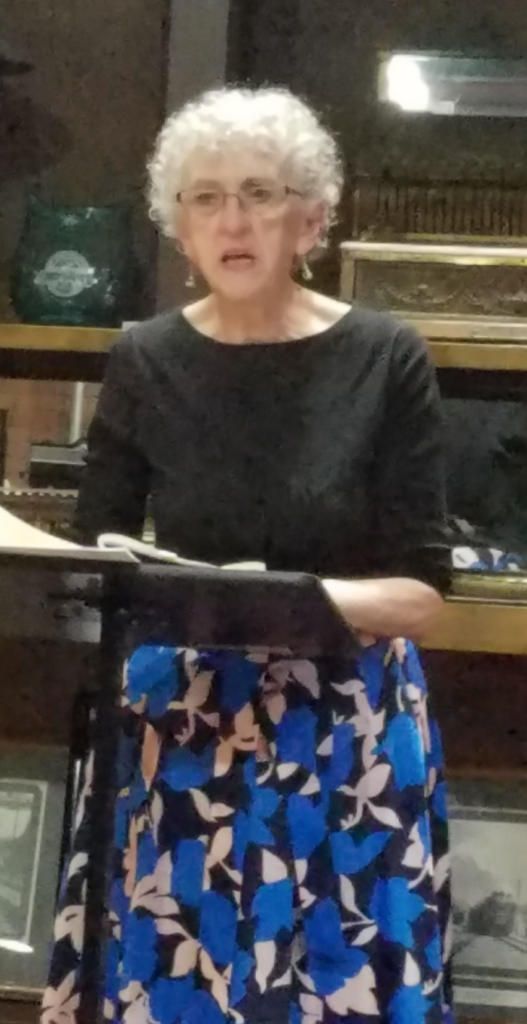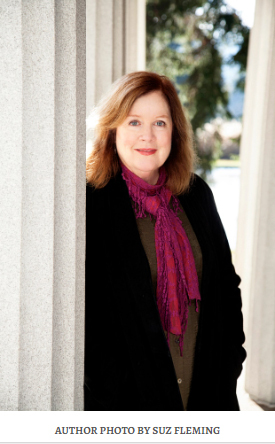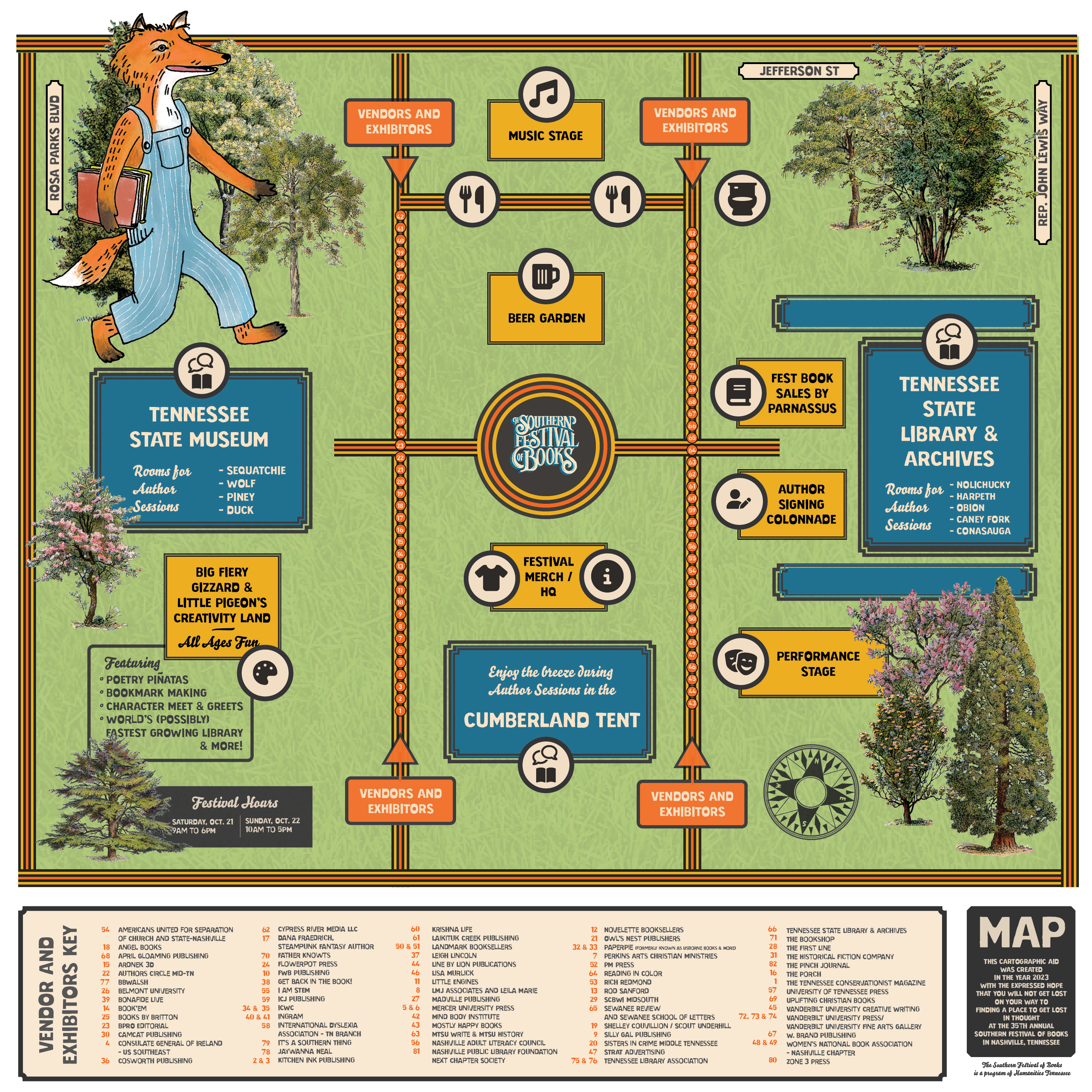
We received 74 total submissions. The first round was read by Joshua Robbins and Darius Stewart. Winners were chosen from a shortlist of amazing work by final judge, Marilyn Kallet, Knoxville Poet Laureate from June 27th, 2018-July 2020. For more information about the contest and the judges, visit The Arthur Smith Poetry Prize Submission Page.
Winner

Amanda Chimera, by Mary B Moore
Mary B. Moore’s five poetry books include Dear If, Orison Books 2022; Flicker, Dogfish Head Prize 2016; The Book Of Snow, Cleveland State U Poetry Center 1998; the prize-winning chapbooks are Amanda and the Man Soul 2017, and Eating the Light 2016.
Mary’s poems appear lately in Birmingham Poetry Review (BPR), Poetry, Prairie Schooner, NELLE, Nimrod, Gettysburg Review, Terrain, and more. She has won Birmingham Review’s Collins Prize and NELLE’s Three Sisters Award, and she won second place in Nimrod’s 2017 Pablo Neruda Award, and third in Terrain’s awards.
Runner Up
Incidental Pollen, by Ellen Austin-Li
Ellen Austin-Li’s work appears in Artemis, Thimble Literary Magazine, The Maine Review, Salamander, Lily Poetry Review, Rust + Moth, and many other places. Finishing Line Press published her chapbooks—Firefly (2019) & Lockdown: Scenes From Early in the Pandemic (2021).
Ellen is a Best of the Net nominee. A Martin B. Bernstein Fellowship recipient, she earned an MFA in Poetry at the Solstice Low-Residency Program. Ellen co-founded the monthly reading series, “Poetry Night at Sitwell’s,” in Cincinnati, where she lives with her husband in a newly empty nest. You can find her at www.ellenaustinli.me.

Honorable Mention

Red Camaro, by Dwaine Rieves
Thanks much for reading and considering Red Camaro…very kind…all best.
Dwaine Rieves is a medical imaging scientist in Washington, DC. His collection, When the Eye Forms, won the Tupelo Press Prize for Poetry.
Short List
- Four Junes, by Sara Dudo
- The Ugliest Girl in Columbiana County, by Elizabeth Tussey
- Kentucky Pathways, by David Cazden
- Everywhere, Everywhere, by Jeffrey Bean
- A Legacy of Birds, by Sharon Ackerman
Previous Winners
2022
The winner: a poem is a house, linda ravenswood
a poem is a house pushes against the borders of poetry to emphasize how all borders are a construct: geopolitical, literary, and personal. Each poem in this outstanding collection reinvents itself, employing a range of forms, such as visual poems and broken poetry cycles, to recreate vivid details of the speaker’s experiences as someone who grew up in California with Mexican ancestry. Readers experience a state of bardo,
a sense of existing between states: between different cultures, between safety and violence, and perhaps most of all, between past and present. Like memory itself, these poems thrive on elision, repetition, and reversal. a poem is a house is a dazzling accomplishment that presents a new and unique poetic vision. —Charlotte Pence, final judge for the 2022 Arthur Smith Poetry Prize, and author of Code


The runner-up: Tasting Flight: Poems by Yiskah Rosenfeld
A yearning dominates the vibrant poems in Tasting Flight, specifically the desire to be enough. Of course, though, one is always enough. The observant, insightful, and confident speaker in these poems knows this truth intellectually but searches to
internalize such knowledge. All of the poems are deeply rooted in the lyrical tradition, following the switchbacks and curves of a mind always in motion, perhaps contemplating the beauty of moths at night or the intricacies of raising a child. Whatever the subject, Tasting Flightis a book that sings back to the exploding
stars. —Charlotte Pence, author of Code and judge for the 2022 Arthur Smith Prize
2021
The winner: The Parting Glass: Poems by Lisa J. Parker
The Parting Glass, like the old Irish song, is a toast to the places and people who make up the author’s roots and base. However Appalachian at its root, it tells a universal story about what grounds and keeps us, even as we move in cities and circles far from home. At its core, this book brings the thread of downhome with its voices and song, to the cities and cultures the author moves through. The poems raise a glass to those still at the table and to those already gone, to homecomings and deployments, to the navigation of love and grief.


The runner-up: Splinter by Susan O’Dell Underwood
A yearning dominates the vibrant poems in Tasting Flight, specifically the desire to be enough. Of course, though, one is always enough. The observant, insightful, and confident speaker in these poems knows this truth intellectually but searches to
internalize such knowledge. All of the poems are deeply rooted in the lyrical tradition, following the switchbacks and curves of a mind always in motion, perhaps contemplating the beauty of moths at night or the intricacies of raising a child. Whatever the subject, Tasting Flightis a book that sings back to the exploding
stars. —Charlotte Pence, author of Code and judge for the 2022 Arthur Smith Prize
















